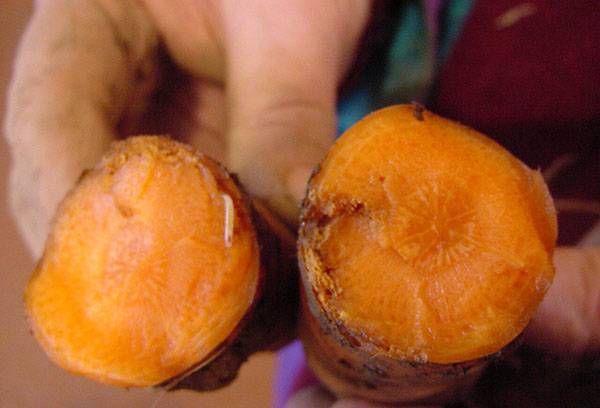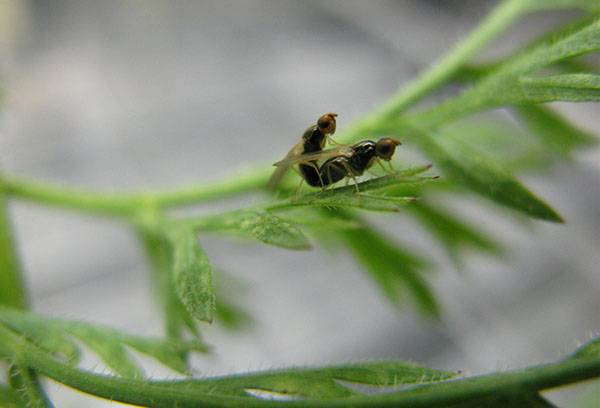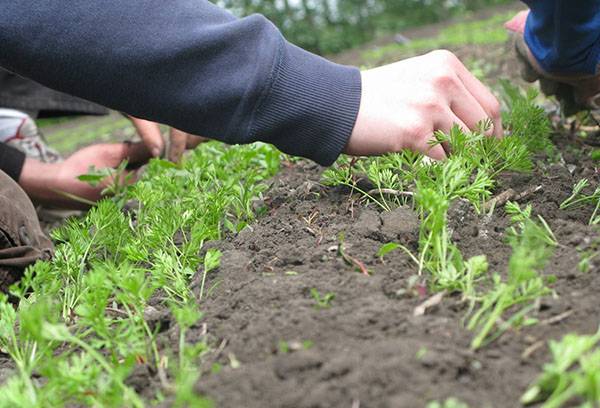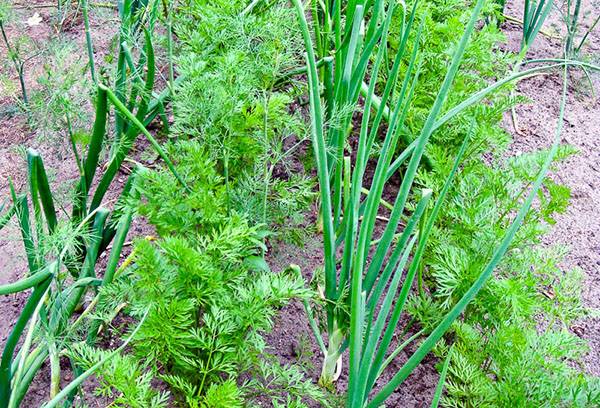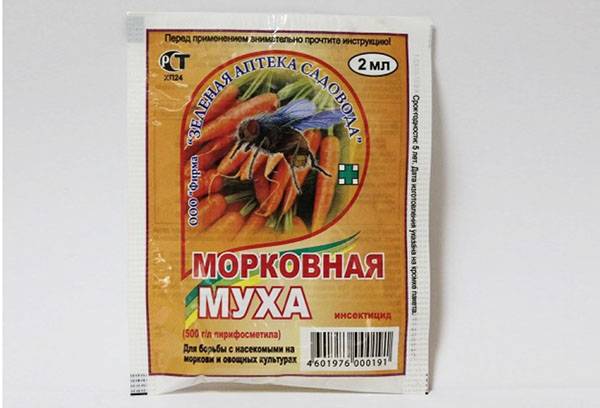How to get rid of carrot flies?
Content:
Carrot fly is one of the most dangerous pests of carrot root crops, as well as such umbrella crops as fennel, dill, parsnip, parsley, daikon and celery. The question often arises: how to deal with a carrot fly? The insect larvae are voracious and can pretty much spoil vegetables that, when damaged, are not suitable for storage and lose their taste. It will not work to completely get rid of the carrot fly on the site, but its population can be significantly reduced. The main control measures are regular treatments and preventive actions. Compliance with crop rotation rules inhibits the intensive reproduction of the pest in the garden.
Signs of a Carrot Fly
It is difficult to visually observe a fly because of its small size. The individual reaches a length of up to 4.5 mm and has a glossy black color. The flowering period of mountain ash, lilac and apple trees indicates that the soil is sufficiently warmed up at a depth of 10 cm, and the carrot fly begins to emerge after wintering. The active phase of egg laying on the crop occurs on the 25-30th day after the emergence of seedlings of carrots. Tentatively this is the end of May.
The insect is quite prolific and lasts for years throughout the growing season, manages to breed several generations of offspring per season. Therefore, the fight against a carrot fly takes a lot of time. This is the difficulty - it is not so easy to get rid of. Sometimes the larvae that do not have time to gain mass remain in root crops and continue their activity during winter storage.
Affected plants have a reddish-violet hue of leaves, which subsequently turn yellow and die. Root crops are covered with tuberous formations and growths, inside them there are passages from larvae. Carrots taste bitter and more rigid in structure.
A visual representation of the number of pests can be obtained using makeshift traps. In a conventional plastic bottle, one third of the upper part is cut off, which is turned down with the neck and inserted into the remaining lower container. Fermented bread kvass is poured onto the bottom of the tank. The fly is attracted to the smell, and it falls into the trap.
The life of a fly
Carrot fly prefers shady places with high humidity. The abundance of rain contributes to an increase in the insect population. In the evening and morning hours, when there is no heat, the fly is most active.
Females lay many eggs near the root of the crop neck, and with good watering and warm weather, eggs develop well. Larvae appear a week after laying. They populate the fruits, where they live and gain weight over the next three weeks.
Then they go out into the ground and pupate, waiting in this state for the next season. In the spring, after warming up the soil, the cycle repeats. The number of carrot flies can drop sharply during periods of dry spring months. In dry weather, up to 50% of eggs laid die.
Preventive methods to combat carrot flies
By prophylactic methods we understand actions aimed at creating conditions that impede the appearance of a carrot fly on a site. These include the following measures.
- Compliance with crop rotation. Changing crop seeding sites contributes to a reduction in pest populations. It should be remembered that at the same place one should not plant several years in a row plants belonging to the same family.
- Removing weeds from the umbrella family.Weeds such as clover and dandelion are additional nutrients for adult flies.
- Early sowing carrots. This allows you to get rid of excessive infection of the fruit.
- The location of ridges in sunny ventilated areas. The fly does not like dry places, and eggs are more difficult to ripen in such areas.
- Periodic weeding and loosening of rows and row-spacings, in addition to improving gas exchange in the soil, leads to disruption and destruction of masonry.
- Thinning and removal of damaged and diseased plants. Thus, pests in the larval stage are destroyed.
- Removing plant debris from the garden and keeping the plot clean. Smells of fermentation, dampness and rotting attract not only the carrot fly, but also many other pests.
- Laying peat mulch on the ridges. Carrot flies do not like the content of peat in the soil.
Folk ways to deal with a carrot fly
There are many methods to get rid of carrot flies in the beds.
- Planting ridges of garlic and onions near or around carrots. You can also alternate ridges. The sharp specific smell of these plants is not tolerated by pests and does not settle near such sites.
- Well-known marigolds with their strong smell attract some insects - enemies for a carrot fly. In addition, they can originally decorate the garden plot.
- Watering carrot crops with onion infusion. For this, onion husks are bred with boiling water in a proportion of one to two. When the liquid has cooled, rows are watered, immediately husks are laid between the rows.
- Infusion of red or black pepper. A tablespoon of ground pepper is bred in a bucket and the ridges are abundantly irrigated.
- A mixture of dry sand and tobacco dust (one tablespoon of dust per liter of sand) is sprinkled on the soil.
- You can cover the crops with agrofibre - this is a fairly effective fight against the carrot fly. The secret is to spill the area where the carrots are planted at the same time, and then lay the agrofibre until the flies fly away.
Chemical methods of control
Chemical methods allow you to quickly get rid of harmful insects, but you should adhere to certain processing rules and remember safety precautions (the use of personal protective equipment) when working with chemicals.
There are a large number of insecticides, the use of which should be in strict accordance with the instructions. It is important to remember that in hot dry weather at high ambient temperatures, the effectiveness of chemicals decreases.
In the mornings with abundant dew, you need to wait until the plants dry out, otherwise the concentration of the drug will decrease and you will not get a one hundred percent protection effect. This also applies to foggy days. In order not to be afraid of chemical poisoning, it is important to adhere to recommendations on the frequency and timing of treatments.
Biological Remedies
This is the most acceptable way to fight and a great alternative to chemistry. Biological products are safe for health.
The most effective drug is Actofit.
- In five liters of water, 10 ml of the biological product is diluted.
- Spraying the beds at the rate of 5 liters per hundred square meters.
- Be sure to add adhesives to the solution.
It is important to know that it is better not to use a sprayer in which chemistry was used for biological products - the efficiency drops significantly.
Tip
To get rid of carrot flies, biological products must be used more often than chemistry.
By combining preventive methods and using protective equipment, you can get a good harvest. In this matter, the system is very important.
